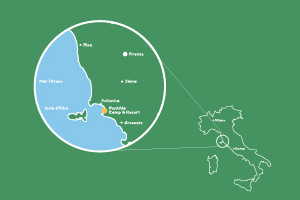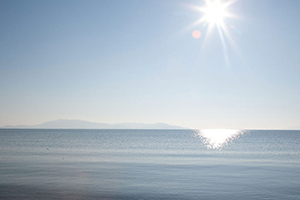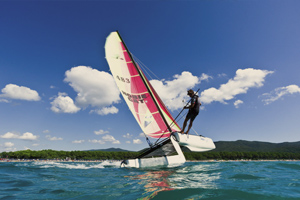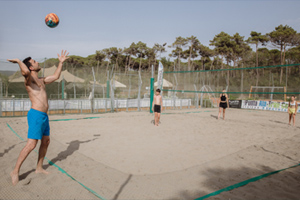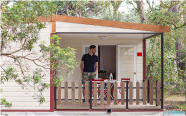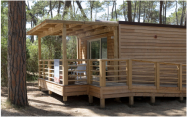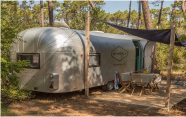Val di Cornia: what to see, history, how to get to the parks
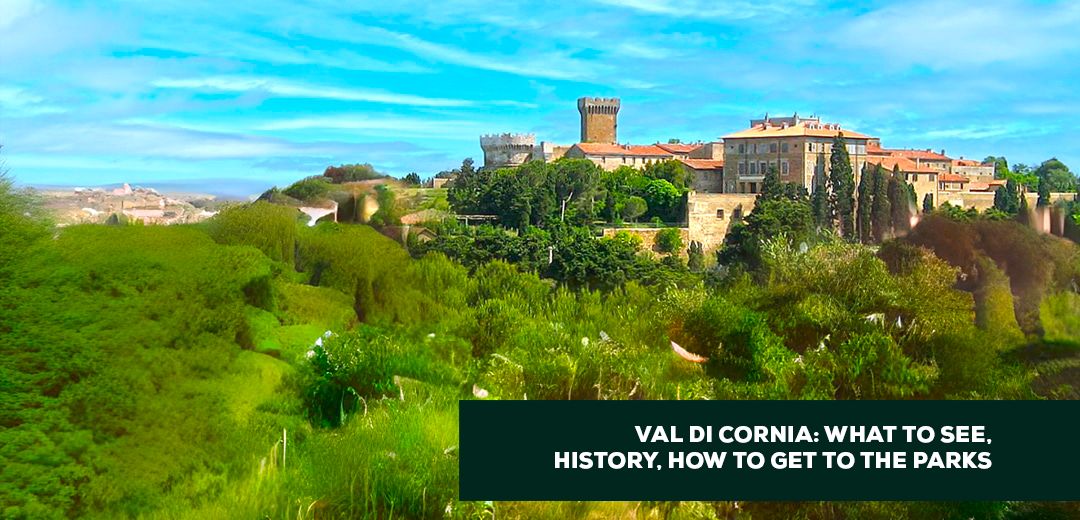
The Val di Cornia is a Tuscan region of great historical, archaeological and natural importance. The SS1 Aurelia road connects it with other cities and facilitates access to its treasures. This area, recovered from its former ponds and marshes, is rich in natural beauty, archaeology and provides a fascinating alternative to the usual tourist destinations. Environmental and cultural elements blend to reveal a unique charm. From places like the San Silvestro Archaeo-mineral Park to museums that tell the history of the region, the Val di Cornia stands out as one of Tuscany's lesser-known gems, ready to reveal itself to those who wish to explore it.
Val di Cornia: A Fascinating and Unique Exploration
The Val di Cornia, located in the southernmost corner of the Costa degli Etruschi and the Province of Livorno, represents a strip of land facing the Island of Elba, behind the town of Piombino, and stretching over the promontory of Populonia towards the sea, as if seeking the ancient connection with the islands of the Tuscan Archipelago. This territory, largely reclaimed from the ponds and marshes that defined its coastline until the previous century, today constitutes an exceptional, extraordinary heritage of environmental and cultural elements.
This area offers an interesting perspective, an exciting alternative to the most common tourist destinations: a place where nature and archaeology come together to reveal the charm of 'Toscana Minore'. A Tuscany still unknown to many, but at the same time much appreciated by those who have had the privilege of discovering its beauty.
What to see in Val di Cornia
The Val di Cornia, with its many archaeological and naturalistic events, especially in the Val di Cornia Parks, emerges as a fascinating and stimulating alternative to the usual tourist destinations. In this region, nature and archaeology not only combine, but also come together to reveal a charm all of their own, specific to 'Toscana Minore'. This area, much appreciated by those who have had the opportunity to discover its wonders, is praised as one of Tuscany's lesser-known gems, ready to reveal itself to those who wish to explore it.
In this area, you will find all the information you need to plan your visit, including details on methods, timetables, rates and special promotions.
Val di Cornia: A Historical Chapter of Napoleonic Domination
A particular historical event dates back to the period of Napoleonic domination: the widening and complete reconstruction, in an extraordinarily rapid time, of the coastal road linking San Vincenzo to Piombino. This transformation took place in 1804-1805, in order to welcome Princess Marianna Bonaparte, later known as Elisa Baciocchi, to the city of Piombino. To her, her brother Napoleon had assigned the principality of Piombino, later enriching his domain with the addition of the principality of Lucca. This significant architectural modification bears witness to a crucial era in the history of the Val di Cornia, symbolising the importance and influence of Napoleon's presence in the region.
History blends with nature in Val di Cornia, making the region a hidden treasure of Tuscany.
San Silvestro Archaeo-mineral Park: A Journey through Time and Mining Art
The San Silvestro Archaeo-mineral Park, located near Campiglia Marittima and the promontory of Piombino, stretches over a vast region of almost 450 hectares. Those who tour this area can immerse themselves in museums, mining tunnels, an ancient village of miners and smelters dating back a millennium, and trails displaying an extraordinary range of historical, archaeological, geological and naturalistic interest.
The visit to the Park starts at the Museum of Archaeology and Minerals located in the Ticket Office building and continues with an expert guide in the Temperino Mine, where one can understand the evolution of mineral exploration and extraction techniques and the enchanting underground world. Leaving the Mine, one heads to the Earle Shaft area, where the Mining Machinery and Miners' Museums recount the last decades of mining history.
From here, the discovery of the Lanzi-Temperino Tunnel begins, which is travelled by train through the path of minerals, starting in the Temperino Valley and arriving at the processing plants in the Lanzi Valley. As the train arrives in the Lanzi Valley, observers can see mining facilities originally dedicated to ore flotation, later converted into limestone crushing tools. Dominating the panorama of Valle Lanzi, the remains of the medieval Rocca San Silvestro stand out, the symbol and heart of the Park and the fulcrum of the visit, of the experience offered.
Populonia Archaeological Museum
The Archaeological Museum of Populonia, culturally and functionally linked to the Archaeological Park of Baratti and Populonia, represents the main exhibition fulcrum of the Val di Cornia Park System. Through evocative reproductions of ancient landscapes, activities and environments, the museum illustrates the transformations linked to the peopling of the promontory, from prehistory to modern times. It is located in the Palazzo Nuovo in the historic centre of Piombino. It was built in the early 19th century for the rulers Felice and Elisa Baciocchi, Napoleon's sister, within the fortified 'Cittadella', in whose design Leonardo Da Vinci also participated. The vast archaeological heritage that forms the subject of the exhibition was moved to the Museum thanks to an innovative agreement between various bodies, including the Ministry of Cultural Heritage and Activities. It covers 1800 square metres on three floors and houses over two thousand items, including prehistoric artefacts, finds from the Etruscan necropolis of Populonia and Roman materials. These include the silver amphora found in 1968, an object of excellent workmanship and value, and the valuable Fish Mosaic from the Roman period. The scientific project for the exhibition, curated by the University of Siena, emphasised the didactic and communication aspects of the scientific data, with a particular focus on the relationship between man, territory and resources, with the focus on steel production, both ancient and recent.
Map of the Val di Cornia
How to get to the Val di Cornia Parks?
Access to the area is possible by a variety of means.
By car:
The Val di Cornia Parks can be reached via the SS1 - Variante Aurelia. The specific, specially signposted exits are S. Vincenzo Nord, S. Vincenzo Sud, Venturina, and Vignale-Riotorto.
By public transport:
By train:
The nearest station reached by train is Campiglia Marittima station. There is also an ATM shuttle connection, by reservation.
By bus:
In Val di Cornia, the public transport service is provided by ATM.
By plane:
The nearest airport is 'Galileo Galilei' in Pisa, located about 100 km from the Val di Cornia territory and reached by both domestic and international flights.
Where the Val di Cornia is located
The Val di Cornia park region is located 80 km south of Livorno. This area is crossed by the SS1 Aurelia variant, which connects Rosignano to Civitavecchia, providing an essential link between these cities.












